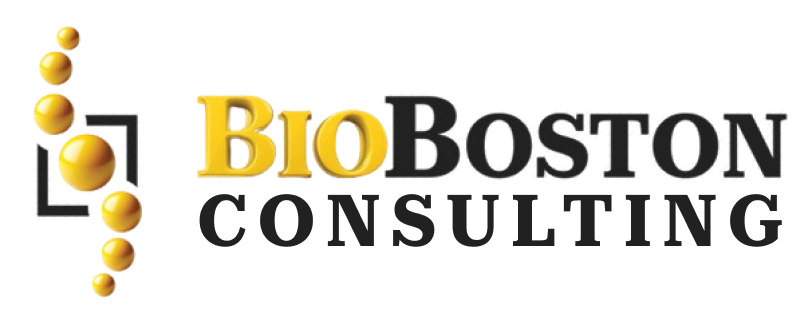One Stop Solution for Life Sciences
In the highly competitive life sciences sector, breakthroughs in therapeutics, diagnostics, and medical devices hinge upon a strong foundation of Research & Development (R&D). A well-structured R&D approach can determine whether a promising concept becomes an approved product or remains stuck on the shelf. At BioBoston Consulting, our R&D services aim to partner with clients from idea inception through development, bridging scientific promise to commercial reality.
What Is Research & Development (R&D) in Life Sciences?
Broadly, R&D refers to the systematic processes and activities by which new knowledge is generated, new products are conceived, and existing technologies are improved. In a life sciences context, R&D typically includes:
- Discovery / Ideation — identifying target molecules, biomarkers, or novel modalities
- Preclinical Studies — in vitro assays, animal models, toxicity studies, pharmacokinetics / pharmacodynamics
- Formulation & Process Development — optimizing how a drug is made, delivered, stabilized
- Analytical and Validation Methods — developing assays to test identity, potency, purity, stability
- Technology Transfer & Scale-Up — moving from lab scale to pilot or manufacturing scale
- Proof-of-Concept Studies or Pilot Trials (sometimes)
- Iterative Design & Optimization — refining based on data, feedback loops
The R&D stage is iterative, uncertain, and resource-intensive. But it is a necessary bridge between scientific idea and regulatory/clinical execution.
Why Should Clients Engage an R&D Service Partner?
- Access to Expertise and Specialized Capabilities
Many life sciences firms, especially small or mid-size ones, may lack deep in-house expertise in certain specialized assays, process development, or regulatory expectations. Partnering with a consulting firm that understands both the science and the regulatory landscape fills that gap. - De-risking Early Development
Decisions made in R&D (e.g. choice of molecule, formulation, scale, stability) have downstream impact on regulatory acceptability, manufacturability, and cost. A smart R&D strategy mitigates the risk of late-stage failures. - Efficiency and Focus
Outsourcing or co-developing R&D tasks allows the client to focus internal resources (core team, strategic decisions) while leveraging external talent and infrastructure. - Aligning with Regulatory & Market Expectations
Because regulatory agencies and payers expect certain rigor and data formats, an R&D partner that is familiar with regulatory standards can build studies and data packages that will eventually feed into submissions and market acceptance. - Faster Time to Proof / Milestones
With experienced guidance and optimized workflows, clients can move faster from concept to proof of concept, enabling quicker go/no-go decisions. - Cost Management
While R&D is expensive, missteps (redoing experiments, reformulation, invalid methods) are costlier. A well-run R&D endeavor helps avoid waste and misdirection. - Flexibility & Scalability
As the program evolves, having an external R&D partner helps scale up or pivot more readily, without being bottlenecked by internal capacity.
Benefits to the Client of BioBoston’s R&D Services
When you engage BioBoston Consulting for R&D services, clients can expect:
- Tailored Scientific Strategy — we help you design an R&D roadmap aligned with your product class, risk tolerance, and business goals
- Integrated Regulatory & Technical Planning — R&D and regulatory strategy go hand in hand to reduce friction later
- Access to Multidisciplinary Capabilities — formulation, analytical, in vivo, process, method development, etc.
- Faster Milestones & Go/No-Go Decisions — data generation that supports decisions earlier
- Cost Optimization — efficient project management, resource allocation, avoiding duplication
- Seamless Handoff into Clinical / Regulatory Phases — ensuring the data package and format are “submission-ready”
- Support Across Geographies & Modalities — whether small molecules, biologics, cell & gene, devices
These advantages collectively improve your odds of success, shorten development cycles, optimize resource use, and reduce scientific and regulatory risk.
Who Is Responsible / Which Roles Are Concerned?
Implementing and overseeing R&D in a life sciences project involves several key roles:
- Chief Scientific Officer (CSO) / Head of R&D
Provides scientific vision, makes strategic decisions, prioritizes projects, oversees budget. - Project / Program Managers
Responsible for overall coordination, timelines, resource allocation, internal and external partners. - Lead Scientists / Principal Investigators
Domain experts for biological assays, pharmacology, toxicology, chemistry, formulation, etc. - Analytical / Method Development Teams
Develop, validate, and maintain analytical assays to support R&D and regulatory needs. - Process Development / Manufacturing Scientists
Scale the process, optimize yield, robustness, manufacturability. - Quality Assurance / Quality Control (QA / QC)
Ensure study integrity, compliance with GLP, GMP, documentation, audits. - Regulatory Scientists
Align R&D design with regulatory expectations, advise on risk, help structure studies for future filing. - External CROs / Labs / Partners
When outsourced, external service providers execute experiments, but oversight remains internal. - Senior Management / Sponsors
Ultimately accountable for resource allocation,governance, decision points (e.g. whether to continue or pivot).
In a consulting partnership, the client and BioBoston’s internal scientific/regulatory team collaborate closely, often with BioBoston providing supporting scientists, project management, and regulatory alignment.

